
Importance of materials for improvement of buildings energy efficiency
P.M. ZhukRead the Russian version: Энергосбережение № 4'2016
Operation and Range of Application of Heat Cost Allocators
Reducing heat losses through building structures, using renewable power sources and providing energy efficiency of all functional systems including engineering equipment are crucial areas of energy-efficient buildings design. In order to reduce heat losses through building envelope it is necessary to provide highly-effective thermal insulation for all enclosing structures, avoiding thermal bypasses emergence, providing building compactness and envelope air-tightness. Other important areas of energy-efficient buildings design are controlled ventilation responding to residents needs, utilization of solar energy, highly-effective heating equipment. Materials employed play an important role in most of the above-mentioned ways of improving buildings energy efficiency. They provide functions related to power generation in environmentally safe ways, keep thermal stability and even take part in waste heat recovery during summer heat protection.
In the context of power generation systems, it is worth looking into different material options for solar cells as well as experimental prototypes of algae building panels. Crystal silicon has been a leader at the solar cell panels market for decades. During this period, as a result of researches and developments silicon elements efficiency was raised to 25% (with theoretical limit calculated on forbidden zone width of 33%). At the base of photocell construction lays a contact surface of two types of silicon. Positive electrode is made of metal, acting also as a stiffening fin. A metal base directly contacting with silicon plates acts as a negative electrode. The panel can be constructed by uniting photoelectric cells through cascade or parallel connections. Efficiency of commercial solar cells varies depending on silicon atoms setting from 15-25% in monocrystalline, 12-17% in polycrystalline, 6-10% in noncrystalline. Combining silicon and thin-film cadmium telluride (CdTe) elements allows reaching efficiency of 8-12%. Solar elements are also made using copper, indium and selenium (CuInSe2) as a solar cell, which is related to chalcopyrite in crystal structure. High efficiency of cells with direct-gap semiconductor is reached by forbidden zone optimization. Furthermore, absorption rating of copper-indium-diselenide and its solid solutions Cu(In,Ga)Se2 have maximal wide spectral band of sunlight absorption, which allows to improve and control phototransduction efficiency over 20%. Serious researches are devoted to different types of bases for thin-film solar elements based on chalcopyrite. In particular, glass bases are thoroughly studied researches on utilization of metal and polyimide films as bases are being conducted [1]. Apart from researches on introduction of new materials as a base for chalcopyrite elements, experiments are being conducted on utilization of new material for batteries – compounds of perovskite structure (for example, artificial perovskite and lead halide or indium gallium arsenide). Due to changes of components composition it is possible to change the width of forbidden zone, which allows raising the efficiency of perovskite elements. It is important that proposed materials can be used to successfully improve the efficiency of known silicon elements. For instance, perovskites use more short-wave end of solar spectrum than silicon, generating higher energy electrons. Applying layer of perovskite on layer of silicon it is possible to achieve effect of capturing larger part of solar spectrum. Such application can be done using coevaporation method or ink-jet printing [2].
Another way of using materials able to generate power is shown by developers from Germany. Algae in specially designed panels of building second face grow and breed until harvest time, after which they are placed in a device where they produce biogas during fermentation process. In these conditions biogas output is much higher than from plants growing in soil. Furthermore, building face gathers energy while absorbing the sunlight, which is not used by the algae. This energy is used for water heating or can be stored in the building power saving system through heat exchangers. Thus appears a complex approach on energy utilization, gathered by south-west and south-east faces of experimental building at the building exhibition in Hamburg (Germany), its north-west and north-east sides attract visitors attention. This technology, however, has many disadvantages. The experimental building face (concept designed by SPLITTERWERK, Label für Bildende Kunst, Graz; Arup GmbH, Berlin; B+G Ingenieure, Frankfurt; Immosolar GmbH, Hamburg) and panels in which algae grow themselves are introduced at picture 1 (a, b).
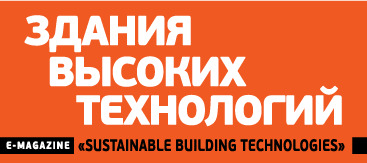 |
| Picture 1 (a) Experimental building face with panels in which algae grow (b) Panels with algae in experimental building at the building exhibition in Hamburg |
The important trend in using highly-effective thermal insulating materials is a provision of their safety during the whole life cycle. In particular, utilization of natural renewable raw materials becomes a promising direction of thermal insulation materials and components science in context of environmental friendly materials. At the heat insulation market apart from straw and peat blocks, there are also slabs and mats made of such materials as cellulose fiber or flocks, hemp, flax fiber, sheep wool, coconut felt, reed, linen and even seagrass posidonia Posidonia oceanica [3, 4]. Leaves and shoots of this marine plant are washed ashore in autumn, winter and early spring and amass on beaches and along the shore of Mediterranean sea and south Australia in forms of bizarre balls size from 2 to 10 centimeters. Previously they were used as package material and raw materials for coarse fabric. In North Africa they were also used as roofing material. Now it is suggested to use fiber made from posidonia balls as an effective heat insulating material with average density 65-75 kg/m3 and heat conduction index 0,0388 W/m·K. Low salt content (0,5-2 %) is an important feature of heat insulating material based on sea grass, because it defines low water absorption and lack of corrosive features. Evaluating the life cycle of material NeptuTherm® based on Posidonia oceanica sea grass, researchers from the Fraunhofer Institute for Chemical Technology ICT (Pfinztal, Germany), tell that primary energy consumption on material production is around 37-50 kWh/m3 depending on implemented technology. This, in opinion of the material developer, prof. Richard Mayer, shows that energy consumption on life cycle of the material made on the base of natural fibers is 30 times less that its counterparts made from glass- or rockwool [5]. Posidonia is spread along the Mediterranean Sea shore, and speaking of the Black sea, eelgrass (sea grass – Zostera marina) can be widely used for heat insulating purposes.
In Russia heat insulating materials made from flax are becoming popular, several trademarks exist in market (Термолен, Экотерм, Экотеплин, Эколен-Экоплат, Val-Flax, etc.). Flax fiber is known to be a natural antiseptic. This feature persists in material made on the base of this fiber, and in combination with high values of vapor permeability allows this heat insulating material to be used as a filter given corresponding placement and utilization of matching construction materials. Heat insulating products made of flax can contain binding components (like starch) or be made without it. In this case flax fibers can be combined by means of attrition. The modern technology of making mats from flax allows making the process less power-consuming. At first, epidermis and wood are removed mechanically without separation of bast-fibered strands, which allows to lower the need in binding agent (only 2,5-5 % are required). The important element of this technology is mats aeroforming and further thermal fixation. Aeroforming is used instead of scribbling equipment, a part of traditional technology [6]. The most important indicator of materials based on natural fibers is their thermal capacitance. This indicator directly influences the thermal comfort of the room, because of high thermal lag. In this context, change of temperature in rooms during both winter and summer periods happens more smooth because thermal capacitance of materials based on mineral fibers is approximately 800 J/kg∙K. Table 1 shows basic indicators of thermal insulating materials made from plant fibers, which allows to compare modern materials when choosing one for certain project.
Trend of raw materials base improving by using herbal substances for heat insulating materials is and outlook of insulators market. At the same time it should be noted that intention to use natural raw materials, despite the safety of heat-insulating materials themselves, can have negative impact on the environment. For example, production of foam plastic from seed oil (like corn) may require so many corn that it can lead to deforestation and application of numerous hazardous chemicals into soil.
Raising energetic and environmental efficiency of materials used for thermal insulation is one of the dominating trends of modern building industry. Earlier it was being told that air is the worst thermal conductor (ʎ = 0,022 W/m∙K), but nowadays there is an experience of vacuum panels utilization. This theory is based upon transition to vacuum in gas using the Knudsen effect. Transition to vacuum in gas by lowering pressure occurs under breaking conditions much more or much less than unity for ratio between gas molecule free path length and cavity typical size. If gas molecule free path length equals to size of cavity in which the gas is contained (this can be related to significant lowering of the gas pressure), we can state that thermal conduction is not about colliding molecules. Thermal conduction in finely dispersed powders and aerogels with pores diameter of 10-8 m in comparison with homogeneous solid bodies occurs due to conductive heat transfer of hard matrix, which forms a pore structure, conductive heat transfer of gas in pores and capillary, radiant heat transfer between pores walls and through convective hear transfer of gas moving through the material pore structure [7]. The last fact is confirmed by researches of systems with closed and open pores type, which demonstrated lesser heat conduction of structures with hermetical pores. Cellular material heat conduction depends on number of different factors, most important of those are temperature, pores size, gas pressure within pores, reflecting ability of capillary walls, etc. The main ways of reducing heat transfer with the use of gas, contained in materials pores, are enlarging the length of gas molecules free path by means of significant decrease in pressure as well as reducing pores size. At present, vacuum insulated panels with powder filler made from pyrogenous silicon dioxide (Vakuum-Isolations-Paneele, VIP) which are one of the most efficient materials for heat insulation become more and more widespread. Such materials are offered by a large number of producers at the market.
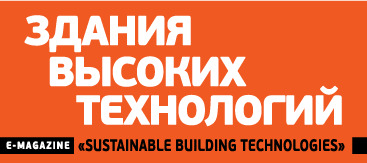
These materials structure is built upon thermos operating principle and includes a core made from meso- and microporous pyrogenous silicon dioxide which is placed in a coat of cloth made from fibers, for the sake of shape and durability [8]. Pyrogenous silicon dioxide is pressed together and covered in coating. Then air is evacuated and elements are welded together. The exterior coating consists of films from metalized polymeric material. Thermal conduction factor of vacuum insulated panels is 0,0022 W/m∙K. Such materials allow creating building envelopes 8-10 times thinner than walls built with the use of regular thermal insulating materials. For a long time, sensitivity to mechanical impacts was considered the main disadvantage of such panels. Nowadays there are sandwich-systems, which allow minimizing possible physical damage of vacuum insulation panels or performing fast replacement of panels in case of efficiency loss [9].
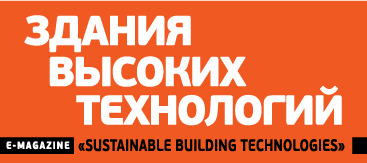 |
| Pic. 2. New building in Munich (Germany) with the use of wooden planks as a protection for vacuum insulation panels (photo by Lichtblau architects) |
Picture 2 shows an example of vacuum insulation panel utilization for a new building, providing protection for panels with the help of wooden planks. Using wood allowed increasing construction's heat conduction resistance. In case of VIP-panels getting damaged, such construction allows to perform an easy replacement of those. Comparing to traditional thermal insulating materials, usable house area increased by 15 m2.
Picture 3 shows a new office building in Munich made from concrete with exterior heat insulation of VIP-panels 20mm thick. Polyurethane foam was used as a supporting material and additional thermal insulation.
Radiation heat transfer control is very important in the context of increasing thermal insulation efficiency. In particular, changes in polystyrene foam plastics composition led to significant reduce in heat losses. Using extruded polystyrene as a heat-insulating material has already allowed reaching considerable results in reducing construction's heat conduction, but nowadays foamed polystyrene with particles of graphite, embedded in the thinnest cell walls is used more often. Due to reflection of infrared reradiation in cavity pockets material with graphite particles can provide heat conduction 20 % less than common polystyrene foam.
Through lowering heat conduction it is possible to reduce the usage of expensive raw materials up to 50 %. Along with reducing raw materials content it is also possible to make the enclosure structure itself thinner. With regard to this, analysts of the TÜV Rheinland audit group (Cologne, Germany) performed calculations of environmental efficiency of the Neopor® material produced by BASF company (Ludwigshafen, Germany).
These calculations showed that per square meter of exterior thermal insulation composite system foam plastic with graphite particles shows advantages in cost and environmental impact with regard to product life cycle compared to rockwool thermal insulation [10].
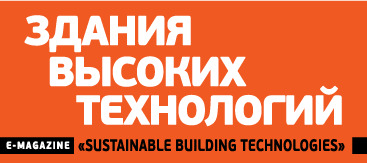 |
| Pic. 3. New office building with exterior heat insulation of vacuum insulated panels and polyurethane foam (photo by Sascha Kletzsch, Martin Pool) |
Protection from thermal bypasses is an essential part of providing thermal protection for buildings. Such problem must be solved at several levels: geometry and shape of building, configuration of abutments and joints, system of attachment and breaching of thermal insulation layers, etc. There are such options for protection from thermal bypasses as: installation of additional enclosure structure thermally separated from the main wall; thermal separation of consoles and other projecting elements. If building of a single structure requires sustainable costs, isolation of console elements (like balcony slabs) can be performed using special elements produced by Schöck company (Baden-Baden, Germany) under the Isokorb® trademark.
This element allows organizing a barrier for heat flow through console structure. In the context of material science it is especially important that it contains specially processed steel with reduced heat conduction index as well as the above-mentioned polystyrene foam with graphite particles. Steel elements allow to transfer different loads from the console part of structure to floor slabs and other types of bearing constructions, while foam plastic successfully performs thermal separation of building envelope from console elements. Uniting in a single design solution, different materials collaborate for the benefit of building thermal protection.
Summer thermal insulation is a modern trend in providing buildings energy efficiency. This problem can also be examined from the material science point of view. Excessive energy gained by heating building structures in summer period can be accumulated by components with fluctuating phase state. For this purpose BASF company proposed paraffins in polymeric microcapsule, which provides protection from leaking of content outside and is able to adopt changes in volume of content during phase transfers, related to changes in temperature. Since the temperature of paraffins phase transfer is 23-26 0С, it allows preserving freshness in rooms when using materials with the addition of this component. This, in turn, leads to creation of comfortable environment in rooms and considerable reduction of conditioning costs. Pictures below show examples of buildings, where materials with Micronal® polymeric microcapsules containing paraffin by BASF company were used (Pic. 4, 5) [11].
Picture 4 shows a photo of domestic building from the Solar Decathlon competition in USA, designed by professor Manfred Hegger from the Darmstadt Technical University (Germany). The building is made from lightweight wooden frames with partial vacuum thermal insulation and interior furnishing with the use of gypsum wallboards with the Micronal® component. The main goal achieved in this project was providing comfortable temperature in rooms at the level of 23 0С with active supply of solar energy to the building.
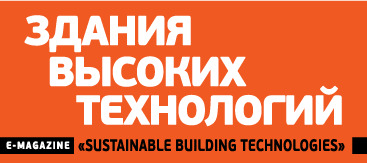 |
| Pic. 4. Domestic building submitted for the Solar Decathlon competition in 2008 (photo from the catalog [11]) |
Picture 5 shows a design of school building, located in Diekirch (Luxembourg), proposed by the administration of civil engineering. Steel containers were used as bearing constructions and the interior furnishing was made with gypsum wallboards with the Micronal® component (cooperation of Knauf and BASF companies). A goal to provide thermal comfort in rooms without active cooling was achieved.
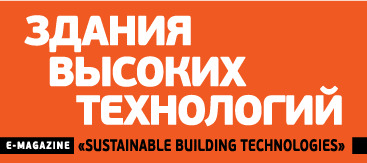 |
| Pic. 5. School in Diekirch, Luxembourg ( photo from the catalog [11]) |
Therefore, active role in improving buildings energy efficiency is played not only by architectural and planning concepts, engineering systems, structural elements and economical and social approaches, but also by material science aspects, which allow finding unconventional solutions to difficult situations which may arise during design of new and rebuilding of existing structures. In particular, putting materials to good use helps to find solution for such issues of principle in thermal insulation as power generation from alternative sources; formation of thermal insulating layer from effective materials with good environmental specifications during their life cycle; reducing thermal bypasses number; summer thermal insulation, etc. Approaches to solving thermal insulation problems are, as a rule, related to using new criteria (for example, thermal capacity, comparison of gas molecule free path length equals with size of cavity, possibility of phase transfer, etc.). Considering this, we should look up to appearance of new materials with unique features, which will allow succeeding in energy-efficient buildings design and construction.
References:
1. V.Yu. Rood, Yu. V. Rood, V.F. Gremenok, E.I. Terukov, B.Kh. Bayramov, Y.W. Song Photosensitivity of thin-film solar cells ZnO/CdS/Cu(In,Ga)Se2/Mo, made on different bases/Semiconductors physics and technique, 2012, volume 46, no 2, p. 231-234.
2. Stauth D. Inkjet printing could change the face of solar energy industry. [Digital resource]: Oregon State University, Corvallis, 2011. URL: http://oregonstate.edu/ua/ncs/node/14094 (accessed date: 03.05.2016).
3. Weiß R.-G., Paproth O. Leitfaden Ökologische Dämmstoffe. Wärmedämmung für Wohngesundheit und Energieeinsparung. NABU Bundesverband. Naturschutzbund Deutschland e. V. Bonn, 2001.
4. Becker N. Ressourceneffizienz der Dämmstoffe im Hochbau. VDI Zentrum Ressourceneffizienz GmbH (VDI ZRE). Berlin, 2014.
5. Was ist NeptuTherm® [Digital resource]: Karlsruhe, 2009. URL: http://www.neptutherm.com/index.php?besondere-eigenschaften (accessed date: 03.05.2016).
6. Yu.I.Borisov New technologies in production of materials from flax/Technical textile. №6. 2003 [Digital resource]: Санкт-Петербург, 2003. URL: http://rustm.net/catalog/article/626.html (accessed date: 03.05.2016).
7. A. Cherkashin Powder vacuum heat insulation [Digital resource]: BCN. Construction newspaper. URL: cnb.by/content/blogsection/10/30/lang,Russian/ (accessed date: 03.05.2016).
8. Ökobilanz eines Vakuum-Isolations-Paneels (VIP). Institut für Energie, FHBB, Muttenz; ESU-services, Uster.
9. Johansson P. Vacuum Insulation Panels in Buildings. Literature review. Report in Building Physics. Department of Civil and Environmental Engineering, Chalmers University of Technology. Gothenburg 2012.
10. Neopor® Professional Broschure [Digital resource]: BASF CE Lüdwigshafen, 2001 URL: http://www.plasticsportal.net/wa/plasticsEU~ru_RU/portal/show/content/products/foams/neopor_downloads (accessed date: 03.05.2016).
11. Micronal® PCM. Katalog für Architekten und Planer [Digital resource]: BASF CE Lüdwigshafen, 2010 URL: http://www.micronal.de/portal/streamer?fid=513382 (accessed date: 03.05.2016).